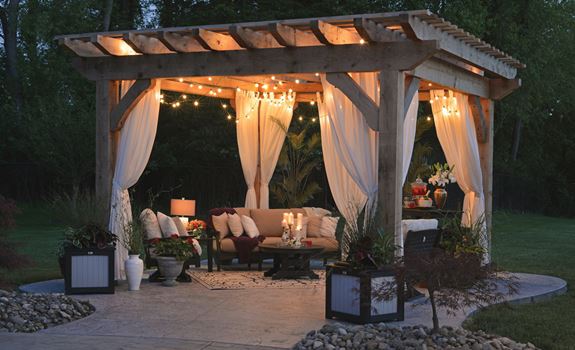Some say gardening is a science. This is actually much more accurate than simply saying it’s a labor of love, a hobby, or a pastime. Gardening takes a little scientific know-how to get everything going and growing.
If you’re new to gardening, don’t worry. You don’t need to have a certified “green thumb” in order to learn the basics and get started growing your favorite vegetables, herbs, and fruits. Even if you’re looking to plant a flower garden, the great part is, you’ll use many of the same principles as when growing produce.

Everyone has to start at the beginning. It would be nice to be able to just skip through your yard flinging seeds and then watch everything grow. But, growing a garden is a little more complex than that.
Here are the basics that everyone needs to know when you begin gardening.
Location
Just like real estate, or starting a business, the three most important aspects of growing a garden are location, location, and location. For example, gardening in Alaska will not be the same as in Arizona or somewhere with a more moderate climate.
Not only is this critical for proper amounts of rainfall and sunlight, but keeping your garden visible is also a technique most gardeners use to ensure that they’ll be more accountable. Basically, if your garden is out of view, you might not spend as much time in it as required to maintain the garden to its fullest potential.
Even if you have a small yard, choose an area with optimum sunlight, where the sun passes and gives the area at least 6 full hours of light, and in an area of your yard that doesn’t hold or pool water.
While ensuring maximum sunlight, find a way to situate your garden closer to the home, that way you’ll see the progress and be more inclined to get outside and tend your garden frequently.
Water
While we’ve already covered how you should place your garden away from lower ground where water can pool, you also need to ensure that you place your garden where you have close proximity to water sources.
For most homes, close access to an exterior faucet is ideal when deciding where to place your garden. You’ll also want to measure the distance to your faucet so that you can buy the right length of garden hose.
The last thing you’ll want to do is to tote a heavy bucket or pail of water repeatedly to your garden.
When checking water levels in the soil, you can choose to use a rain or moisture gauge, and if so, be sure to refer to the instructions on how to read the gauge. Or, you can choose the old fashioned method and simply stick your finger into the soil up to one inch deep. If the soil is dry up to your knuckle, then it’s time to water your garden.
Soil
Soil isn’t simply a patch of dirt that you plant seeds in. The type of soil you choose needs to be selected with care, so that you choose the best soil for the types of plants you wish to grow.
Depending on what you’re growing, you’ll need to select a soil to suit. Some soils are high in nutrients while some are highly acidic, and these conditions are ideal for growing certain vegetables. But, for some herbs and fruits, nutrient-rich soil can actually “burn” the roots and the plants themselves.
Consult a grow chart to select the right type of soil for your plants, and ensure that you evenly mix the soil in with the native soil prior to planting seeds.
Maintenance
Just because you have seed planted in the ground doesn’t mean that you’re done. There’s still a good volume of work to do until you’re ready to harvest.
Weeds and bugs are now your enemies. And, if you don’t keep these pests in check, your harvest might not be too spectacular.
For weeds, avoid using chemical herbicides if at all possible. Many of these chemical compounds are harmful to humans and wildlife. The popular weed killer, Roundup, is actually the subject of major lawsuits as this chemical has caused cancer in some who have used the product.
Instead of chemicals, consider using a mixture of acetic acid, soap, and salt to spray on those pesky weeds. For bugs, such as mosquitos, aphids, flies, and ticks, several herbs such as mint, sage, and rosemary have the natural ability to ward off these types of insects. You can plant these herbs around your garden to help deter bugs.
~
While you can turn your garden into your own personal science project by checking the Ph levels of your soil and water, and meticulously measuring out water and nutrients, the whole point of having a garden is to practice sustainability.
You’ll also be surprised at how much extra money you’ll save from spending on store-bought produce when you’re finally able to harvest.
The bottom line is, have a little fun with your garden. Enjoy it. Keep it maintained regularly and you’ll be happy that you did when you slice into your first juicy tomato.
Published in: Outdoors | Author: Sana






